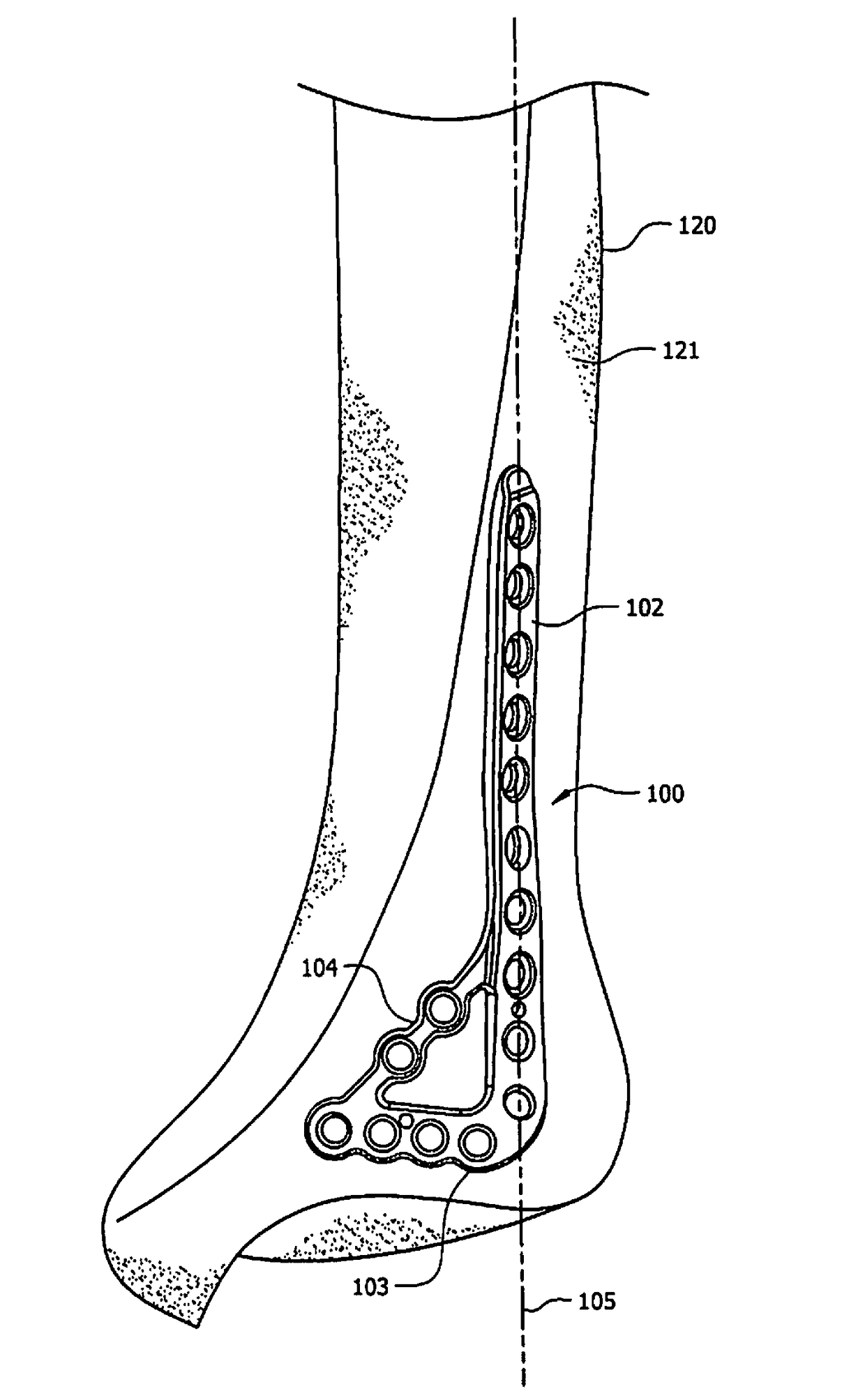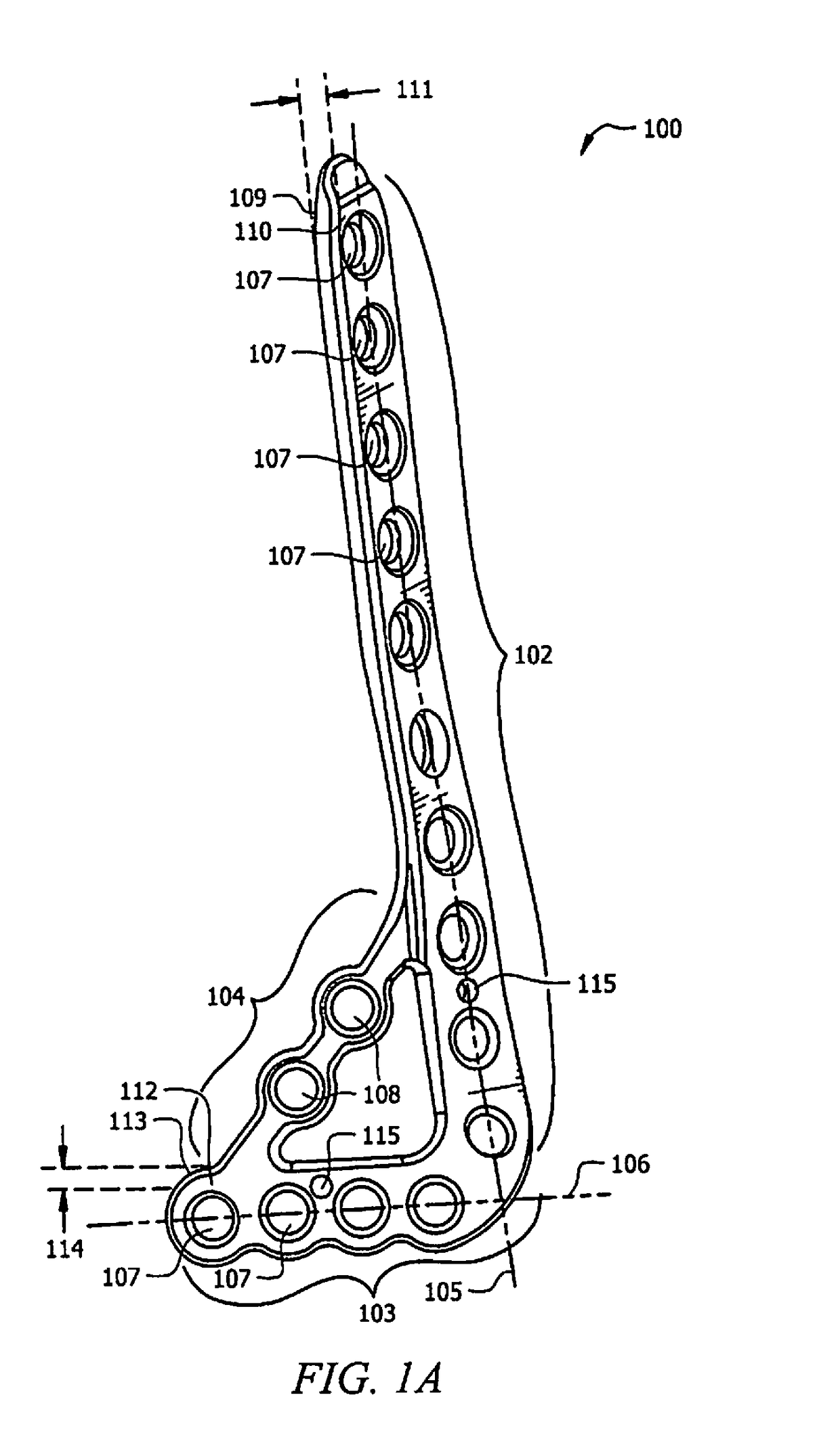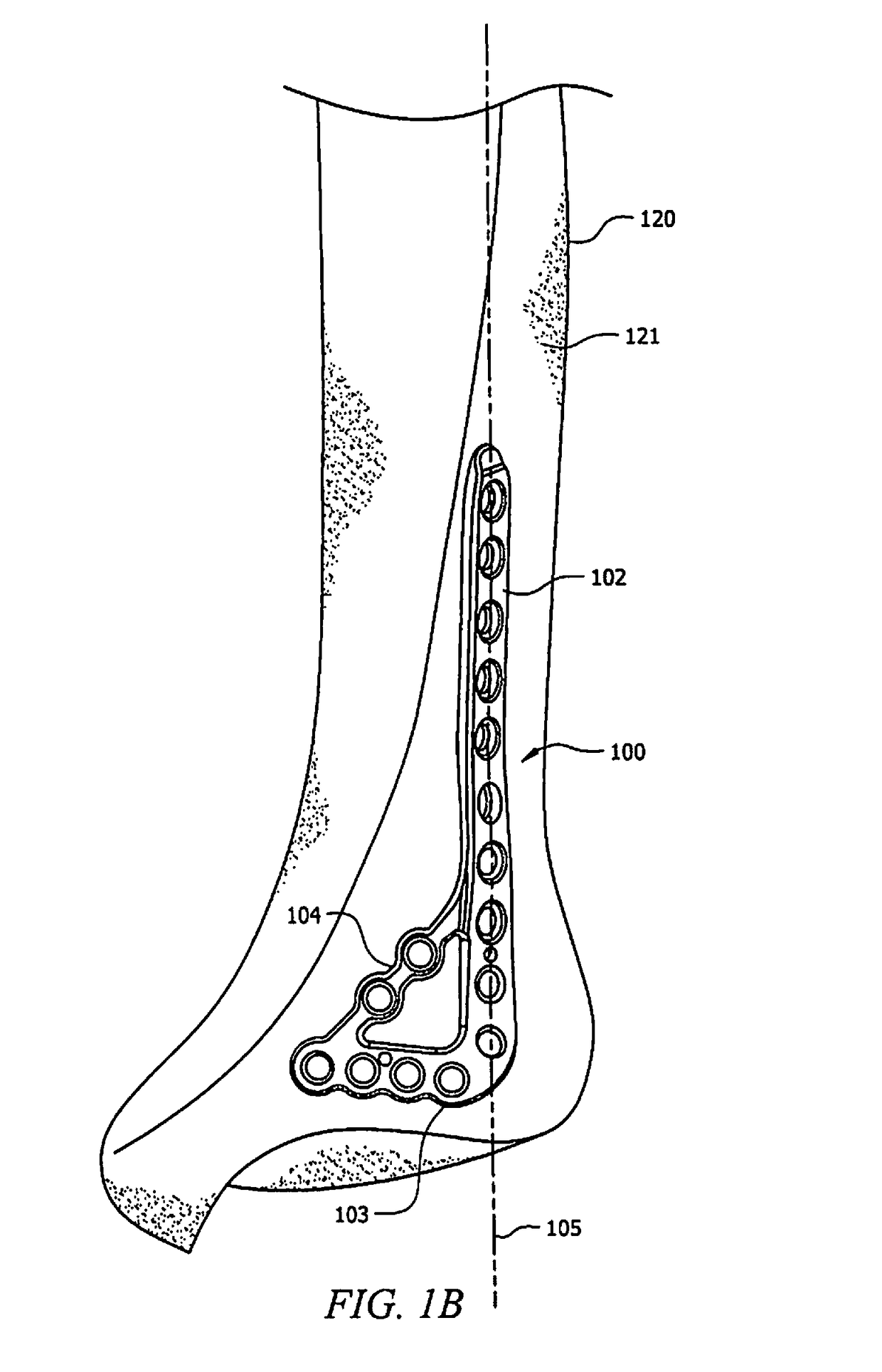Ankle tibia plates
a technology for tibia plates and ankles, applied in the field of implants, can solve the problems of reducing the structural strength of the plate, increasing the risk of plate failure, and affecting the patient's comfort, so as to reduce the overall structural strength of the ankle plate and add structural strength
- Summary
- Abstract
- Description
- Claims
- Application Information
AI Technical Summary
Benefits of technology
Problems solved by technology
Method used
Image
Examples
Embodiment Construction
[0023]The detailed description set forth below, in connection with the appended drawings, is intended as a description of various configurations and is not intended to limit the scope of the disclosure. Rather, the detailed description includes specific details for the purpose of providing a thorough understanding of the inventive subject matter. It will be apparent to those skilled in the art that these specific details are not required in every case and that, in some instances, well-known structures and components are shown in block diagram form for clarity of presentation. Likewise, the terminology used herein is for the purpose of describing particular embodiments only, and is not intended to limit the invention
[0024]Referring to FIG. 1A, an illustrative embodiment of an ankle plate for attaching to the anterior lateral surface of a tibia bone is shown and designated 100. FIG. 1B shows a representative example of ankle plate 100 attached to tibia bone 120. In the illustrated emb...
PUM
 Login to View More
Login to View More Abstract
Description
Claims
Application Information
 Login to View More
Login to View More - R&D
- Intellectual Property
- Life Sciences
- Materials
- Tech Scout
- Unparalleled Data Quality
- Higher Quality Content
- 60% Fewer Hallucinations
Browse by: Latest US Patents, China's latest patents, Technical Efficacy Thesaurus, Application Domain, Technology Topic, Popular Technical Reports.
© 2025 PatSnap. All rights reserved.Legal|Privacy policy|Modern Slavery Act Transparency Statement|Sitemap|About US| Contact US: help@patsnap.com



